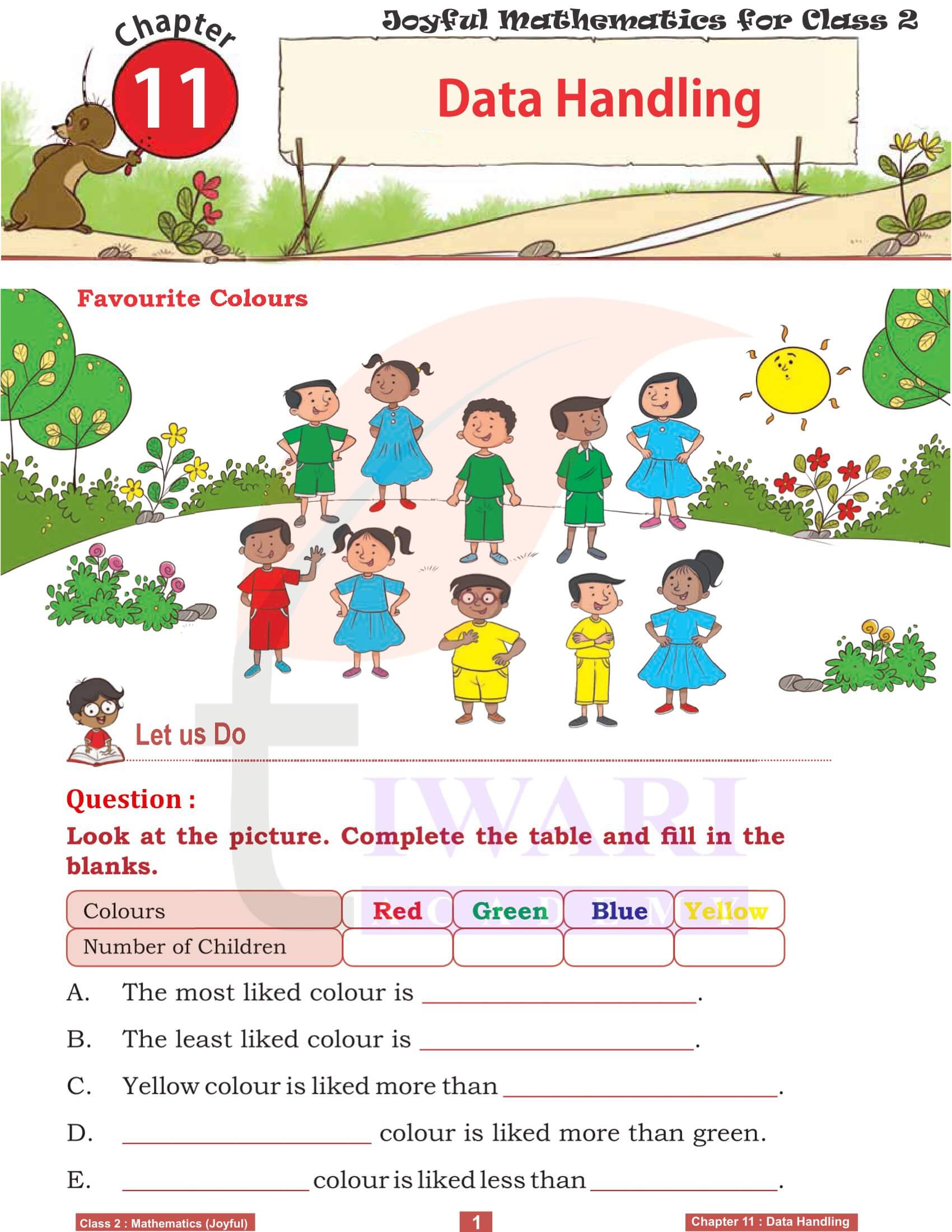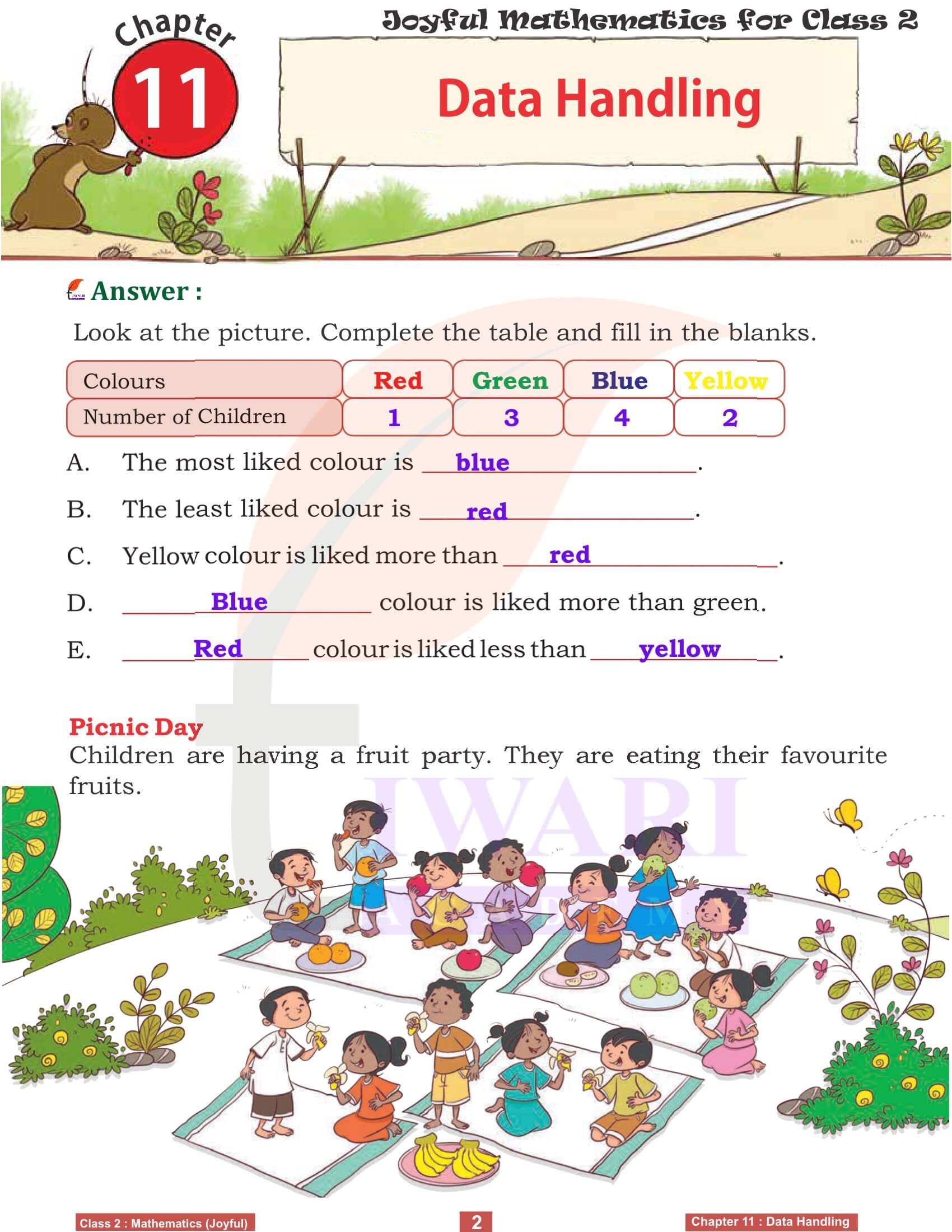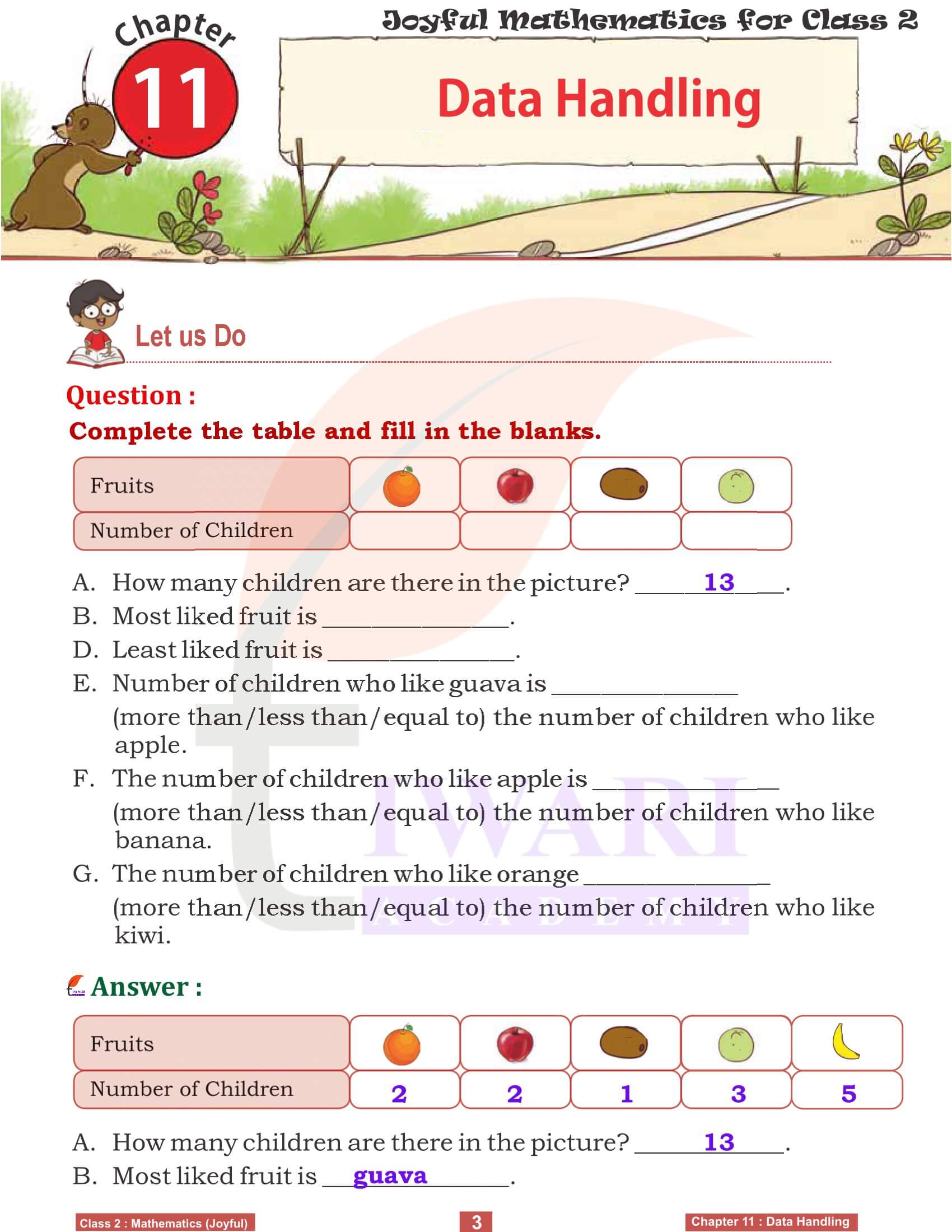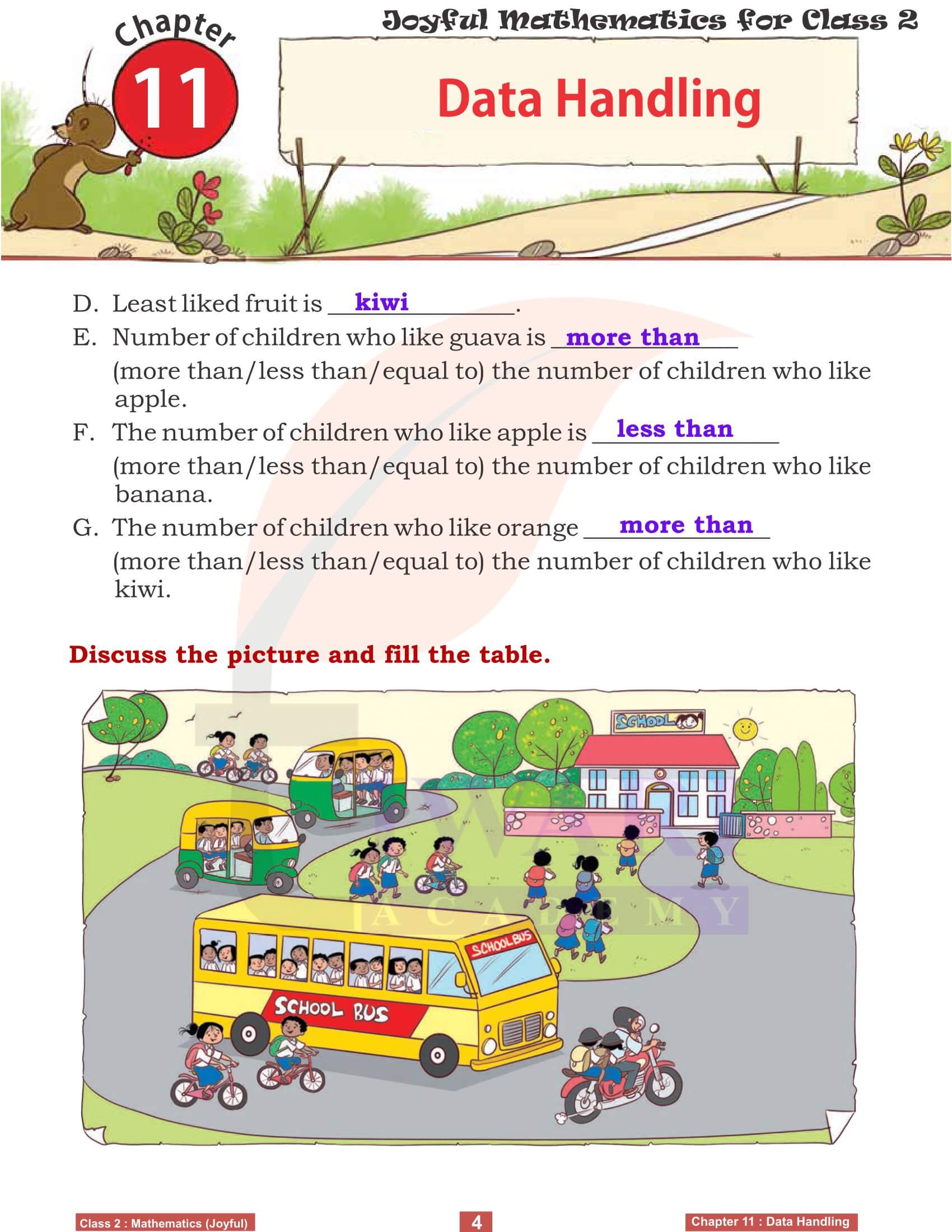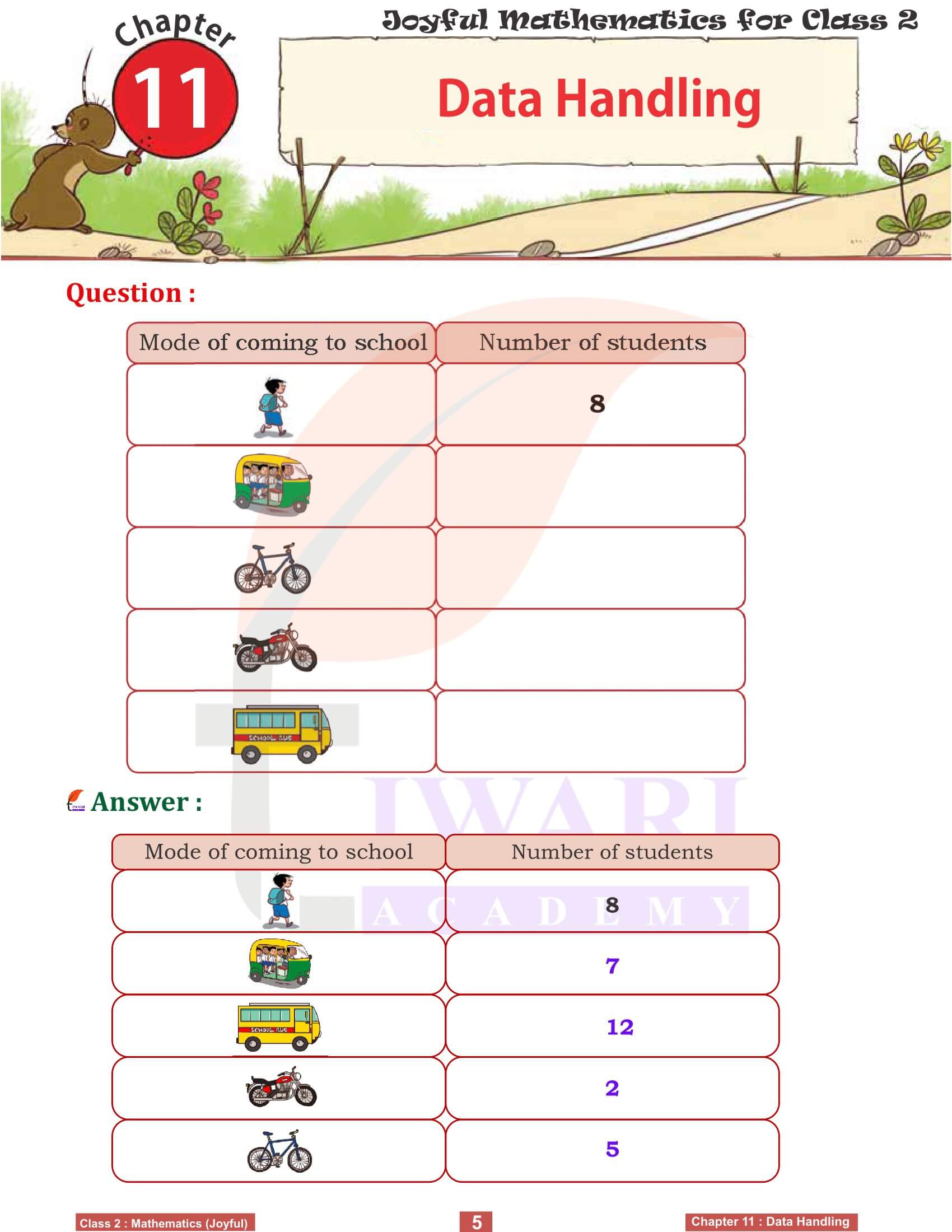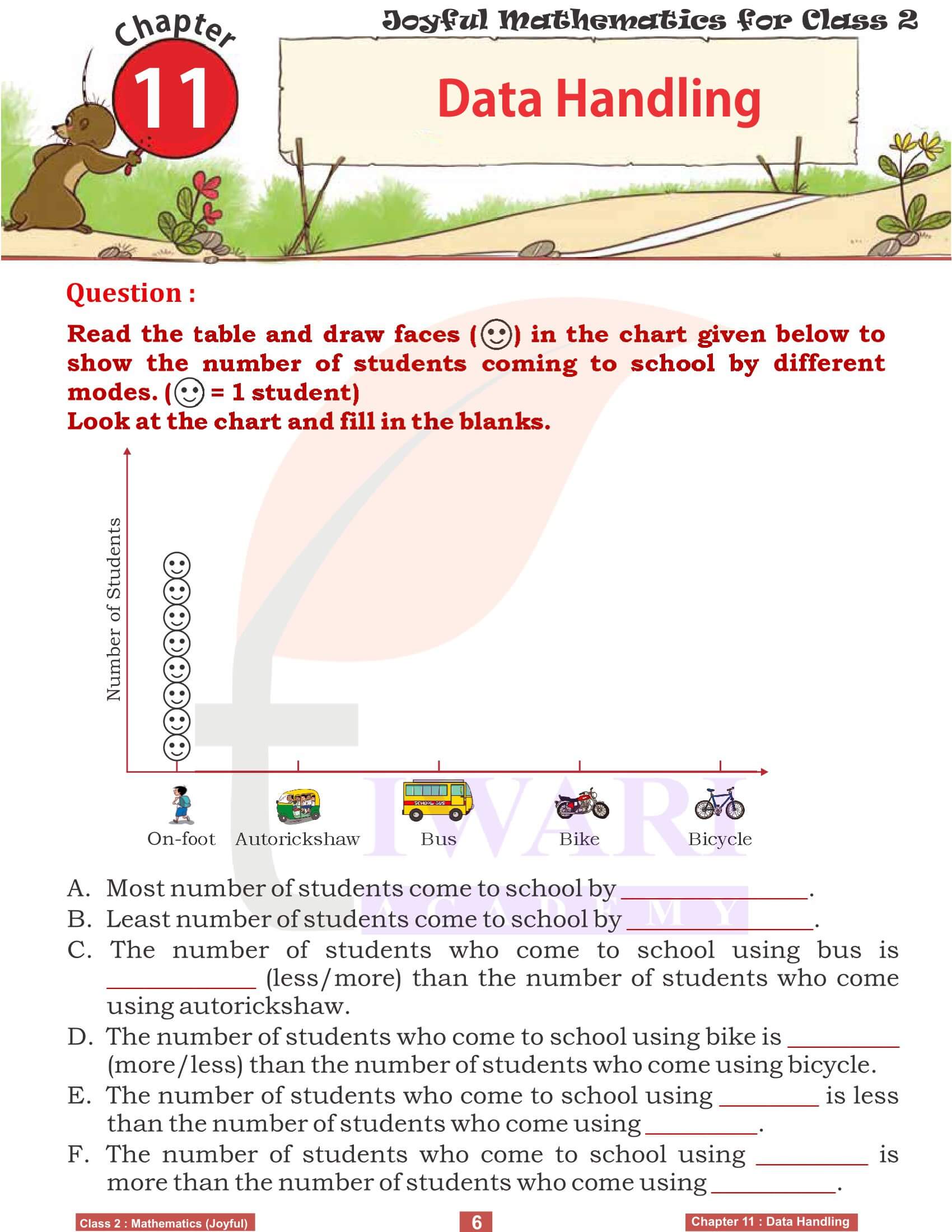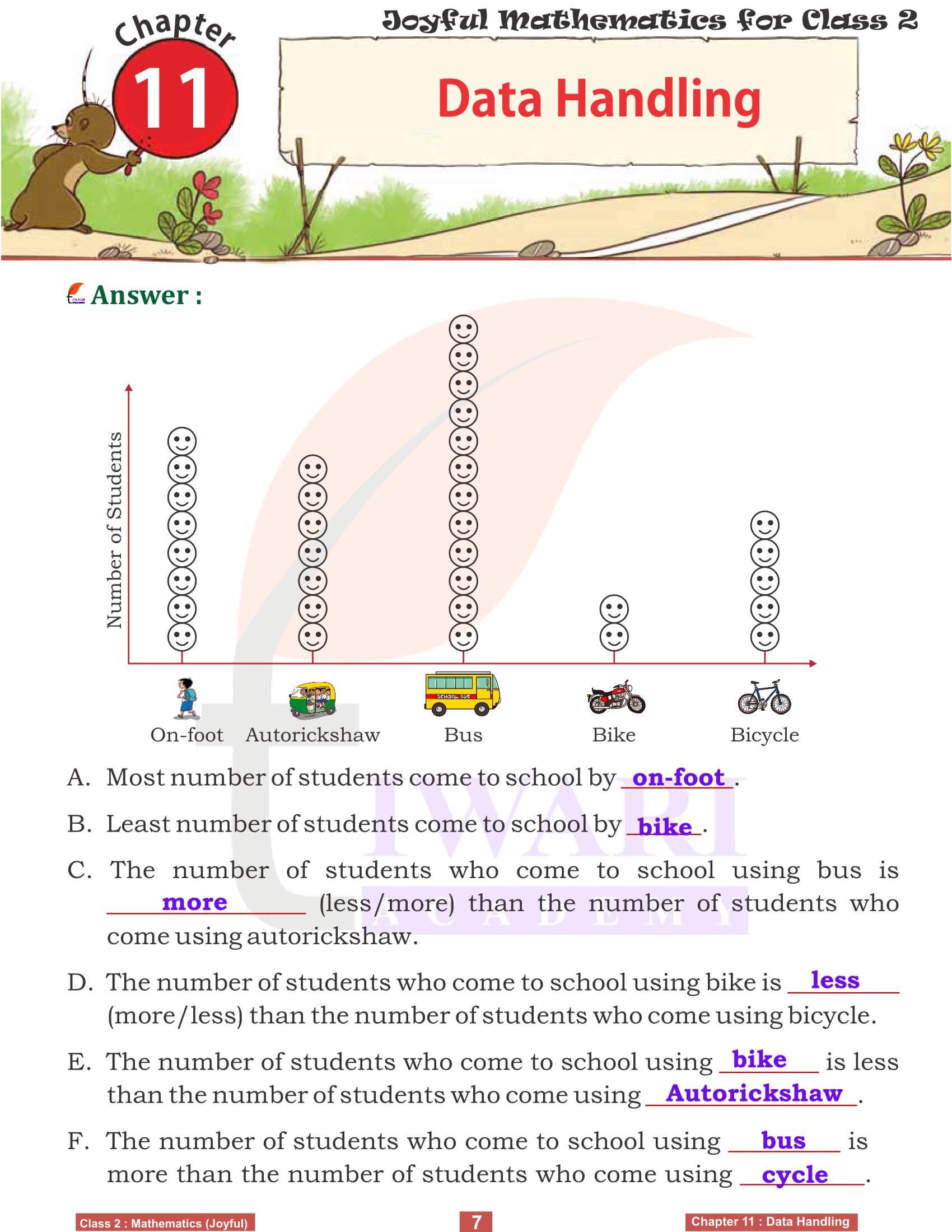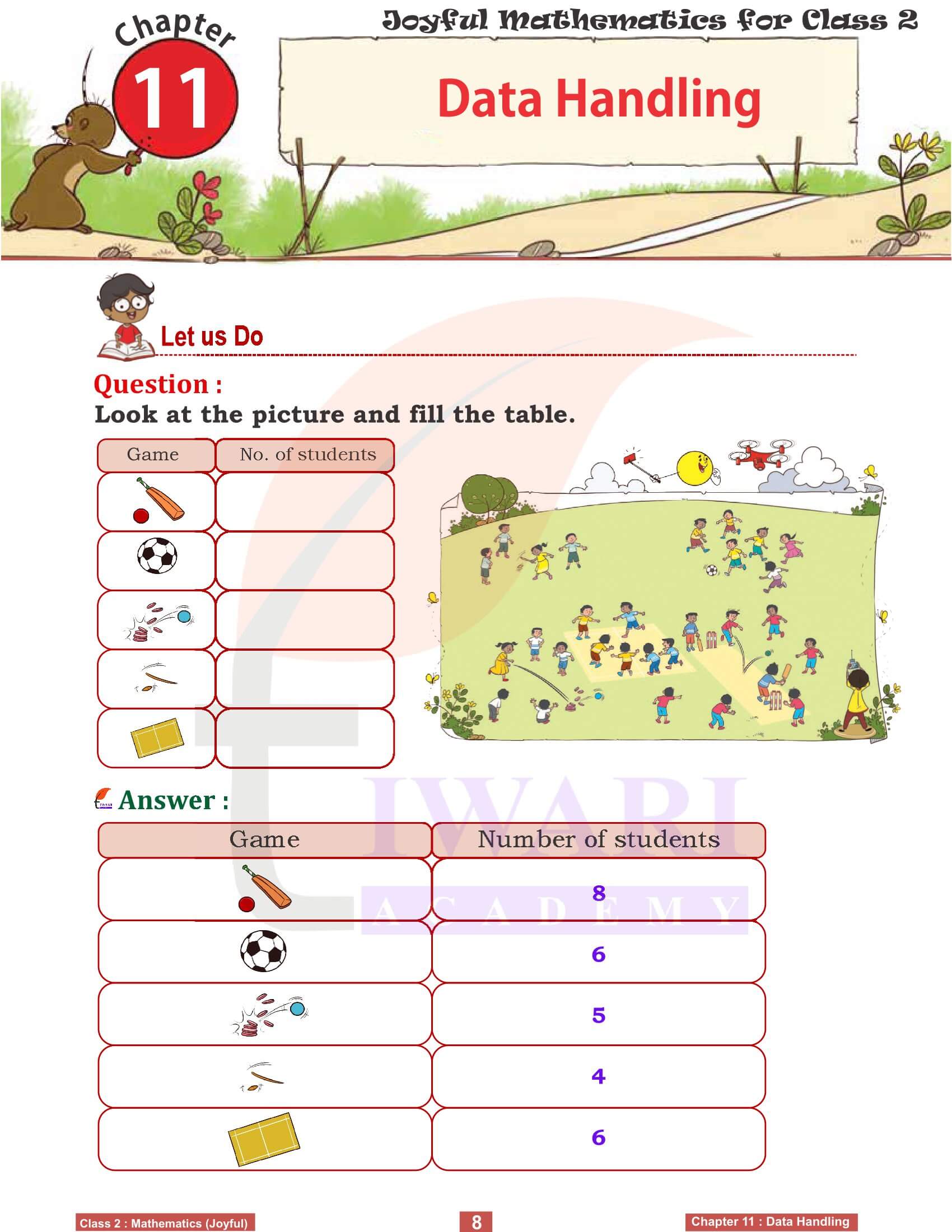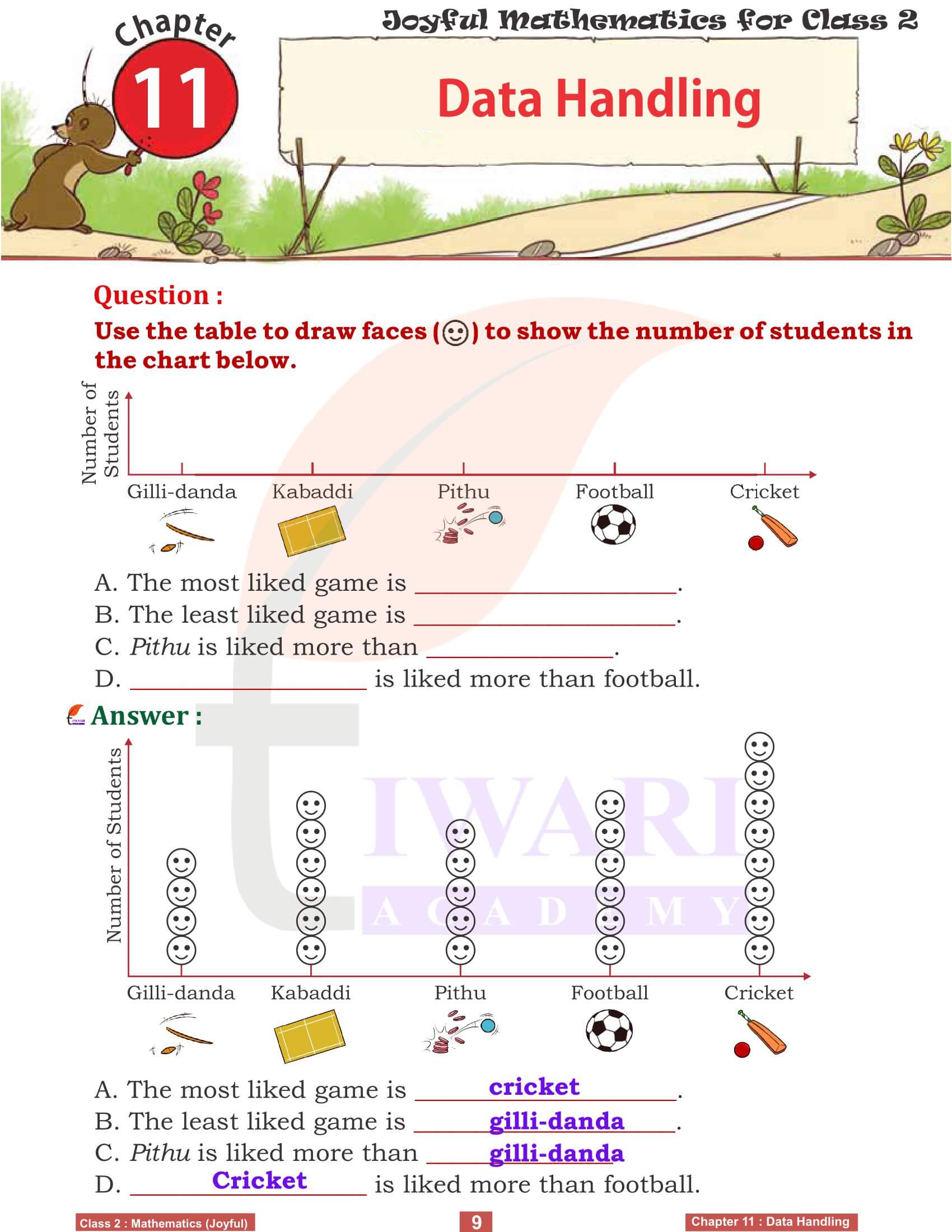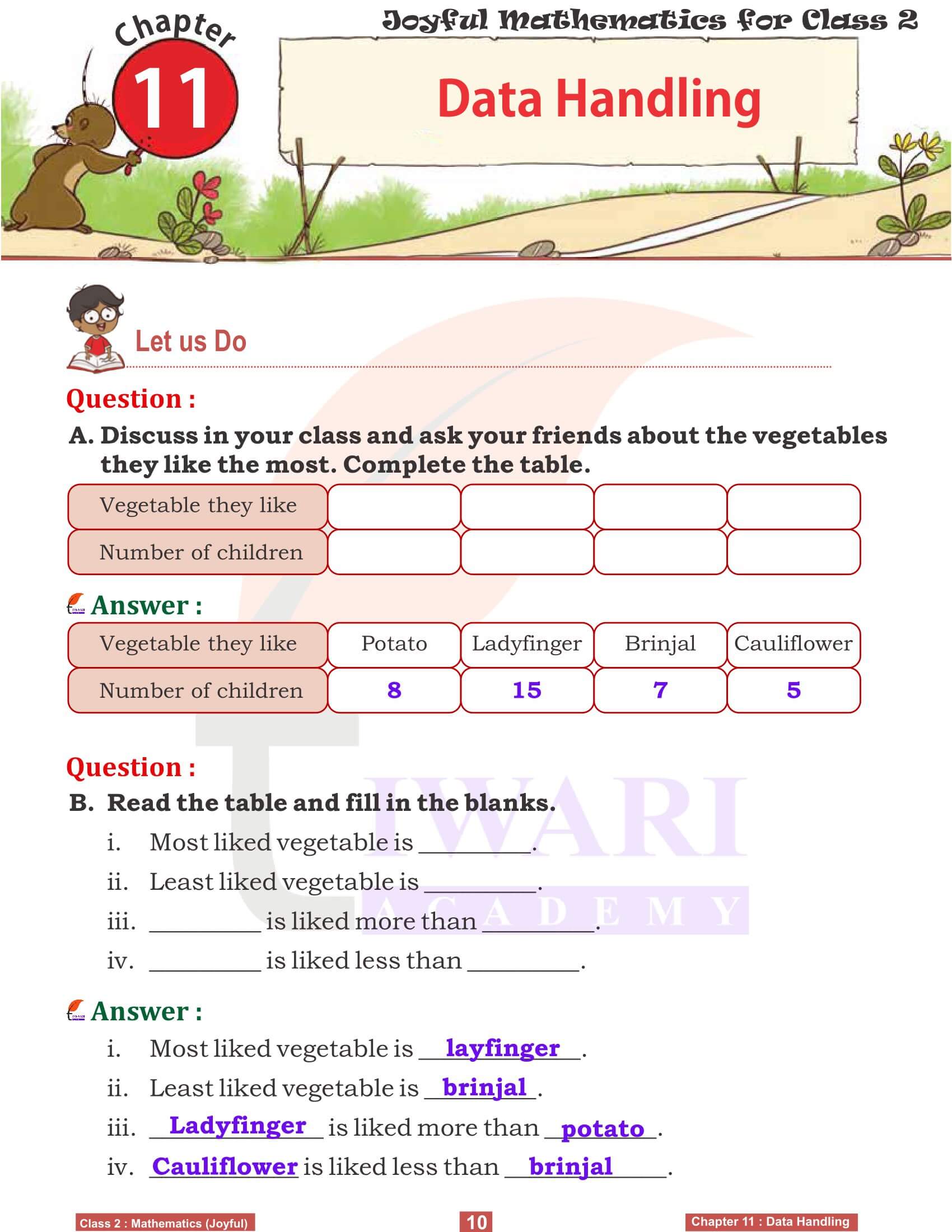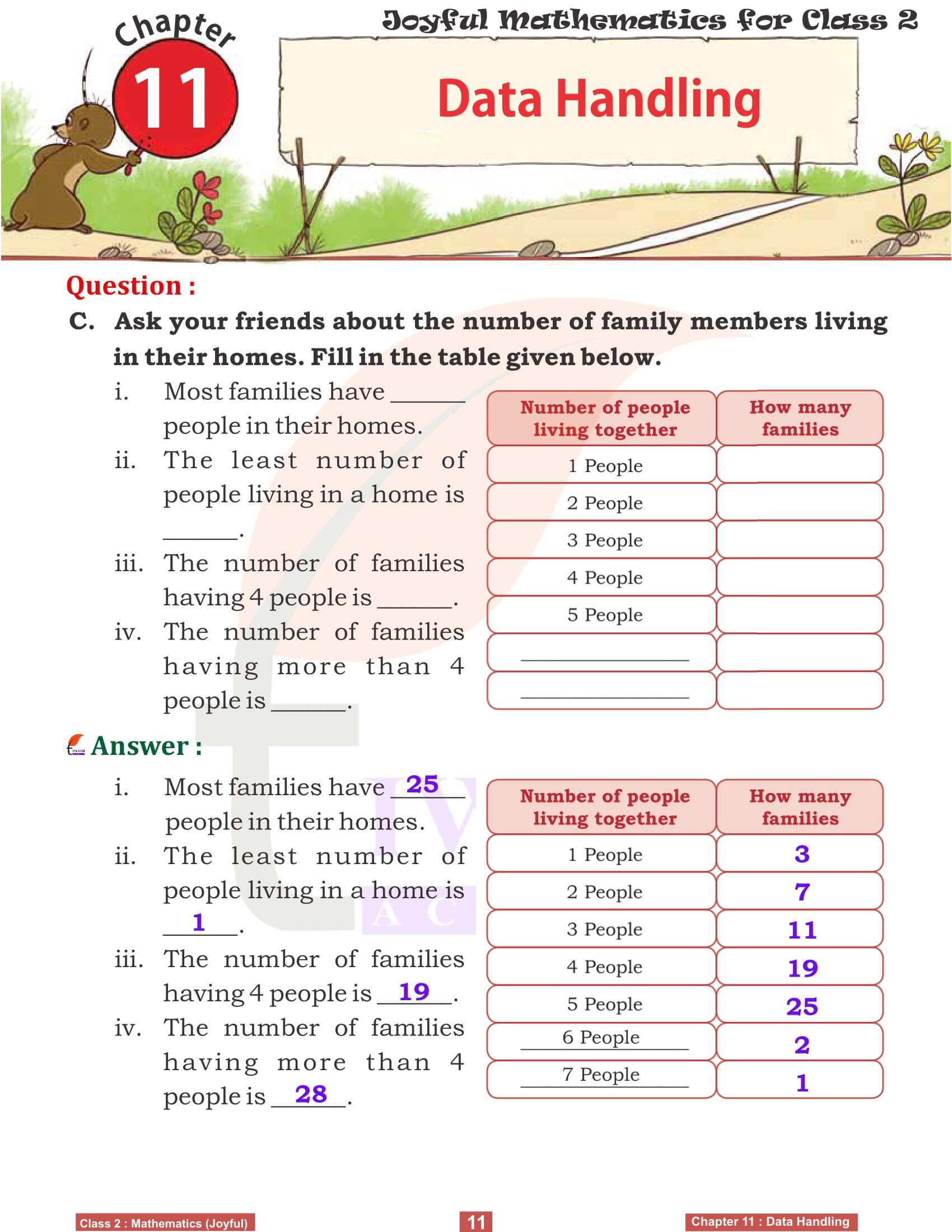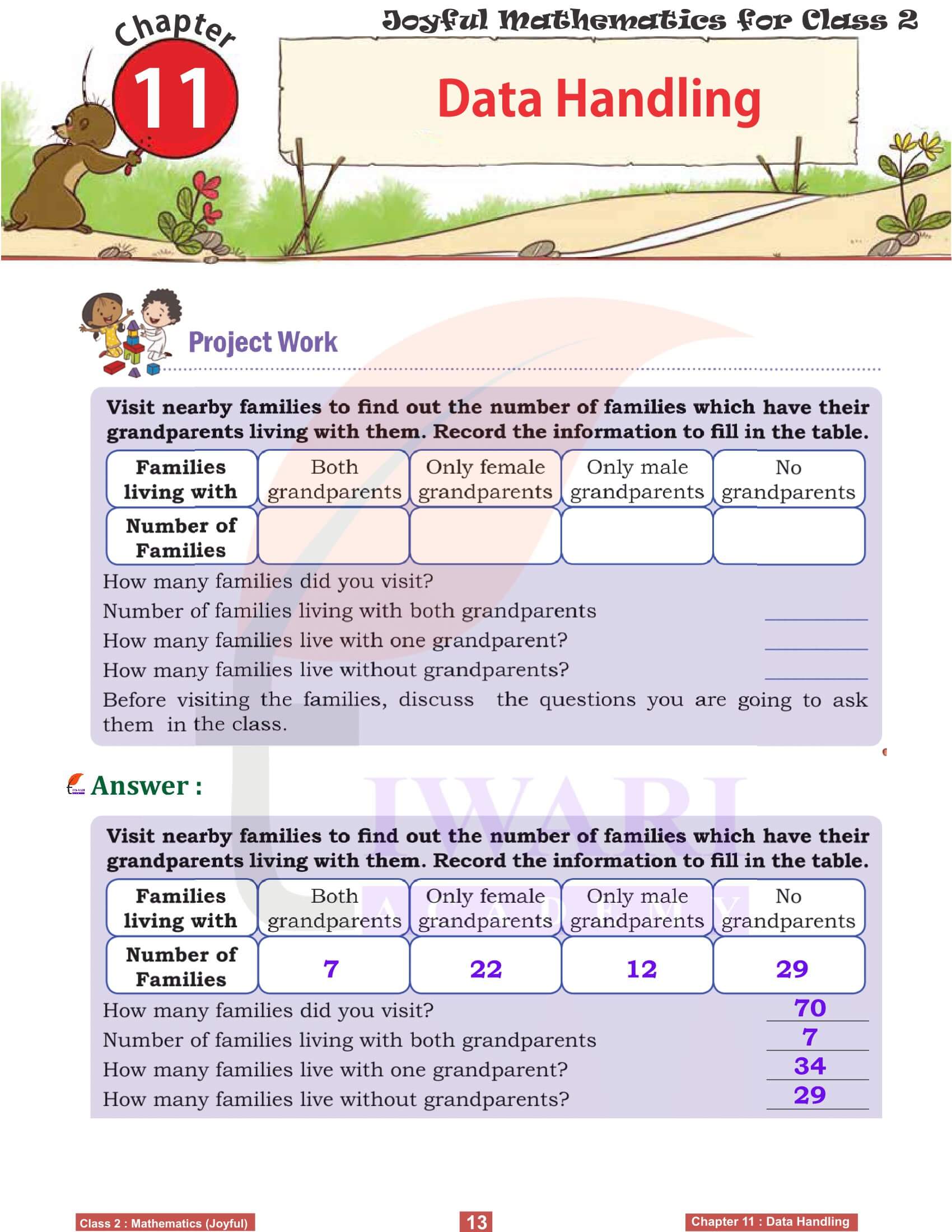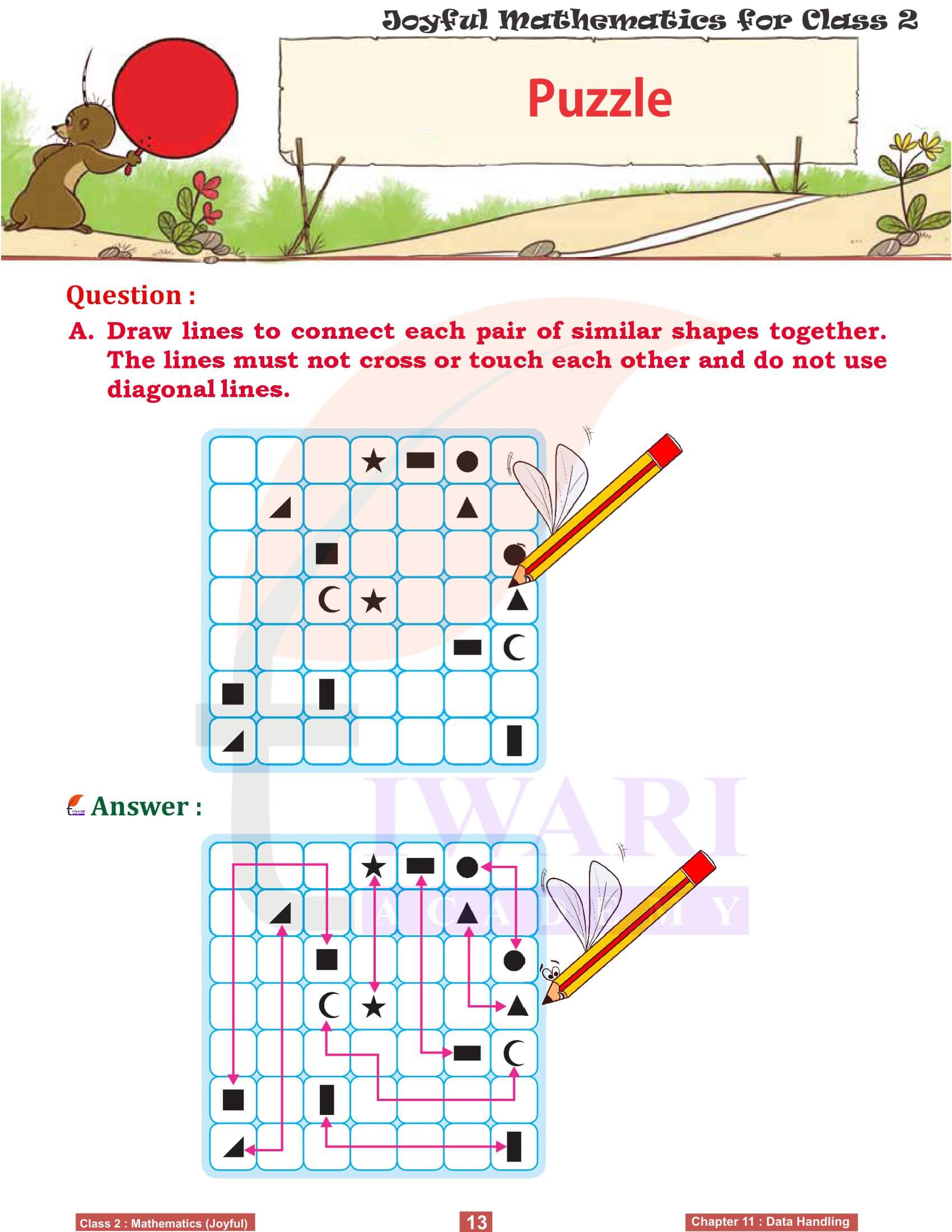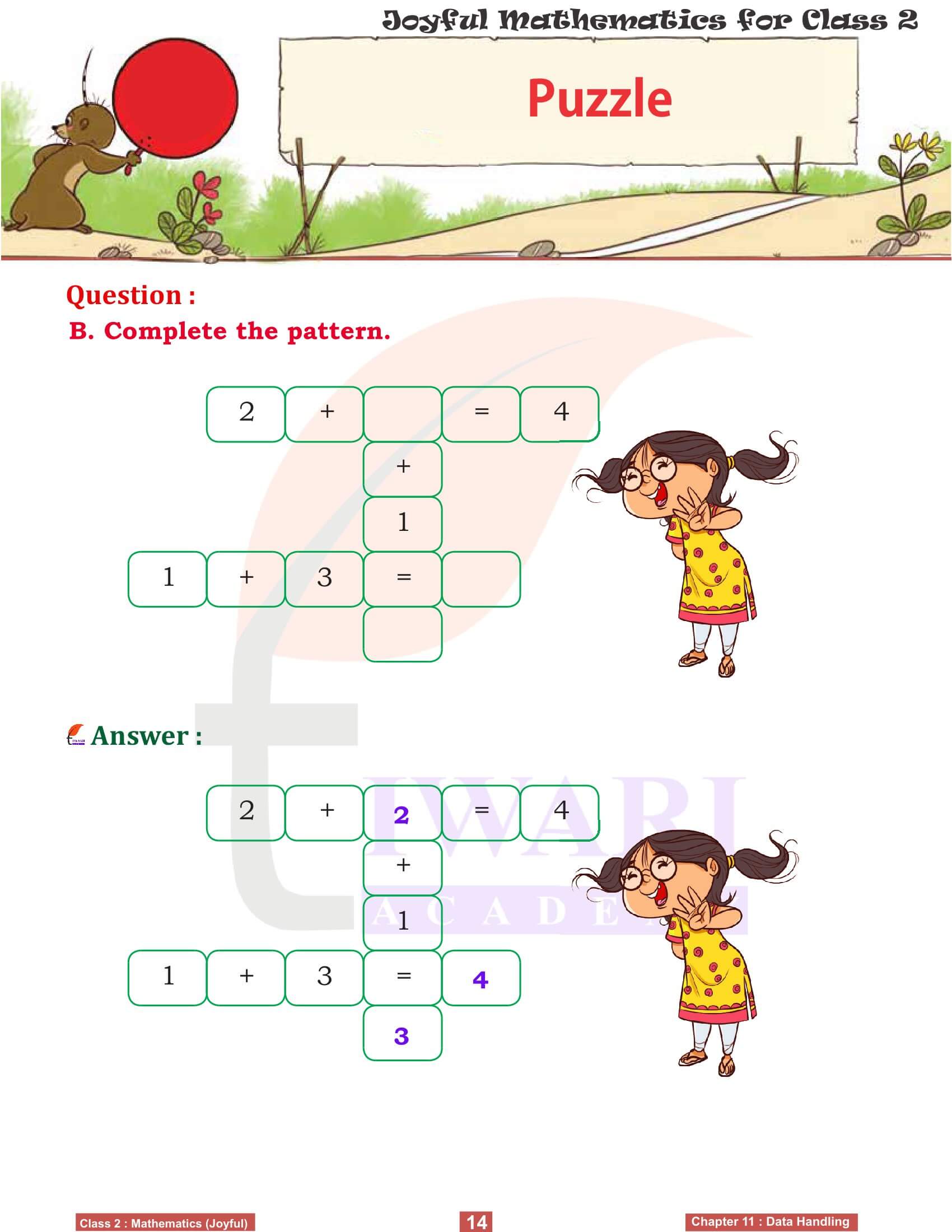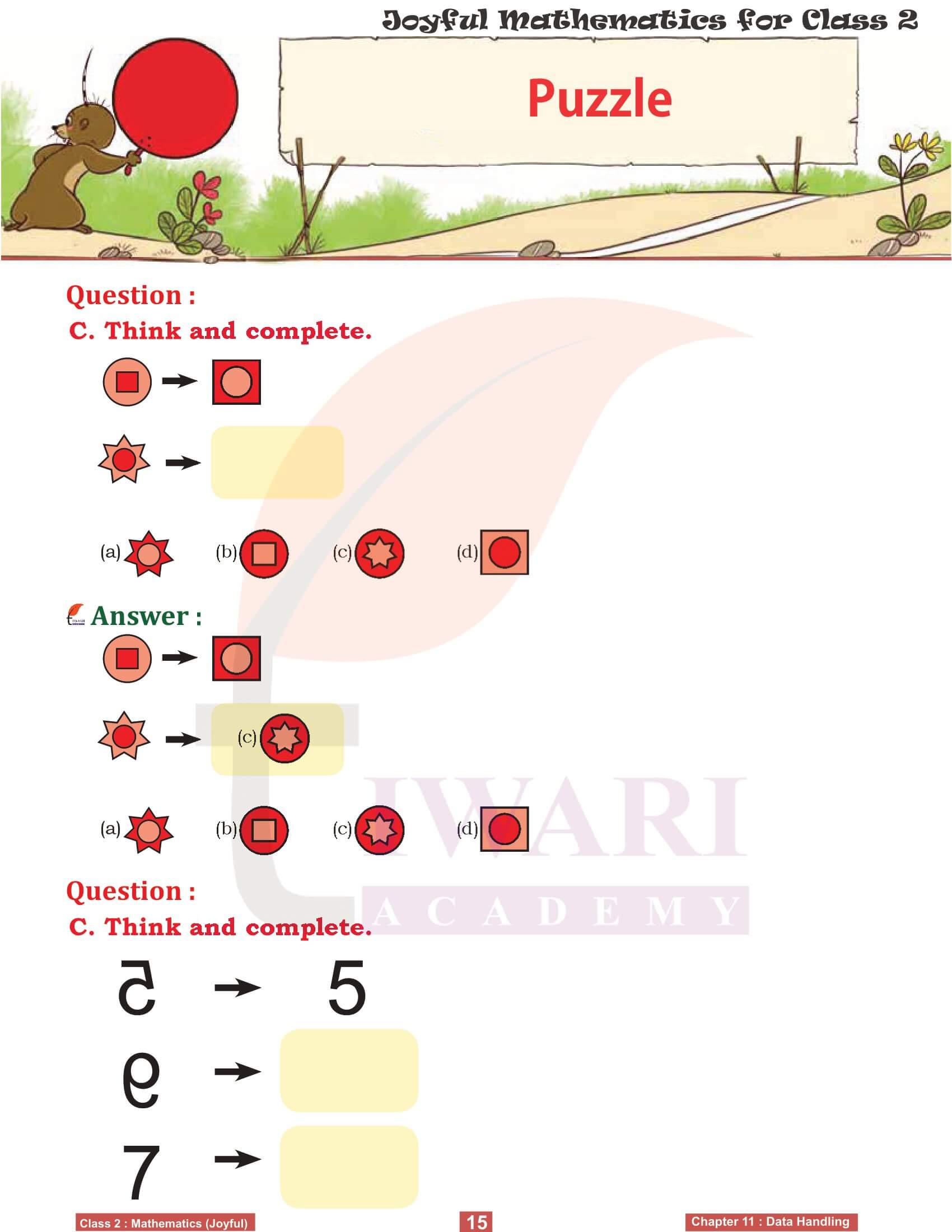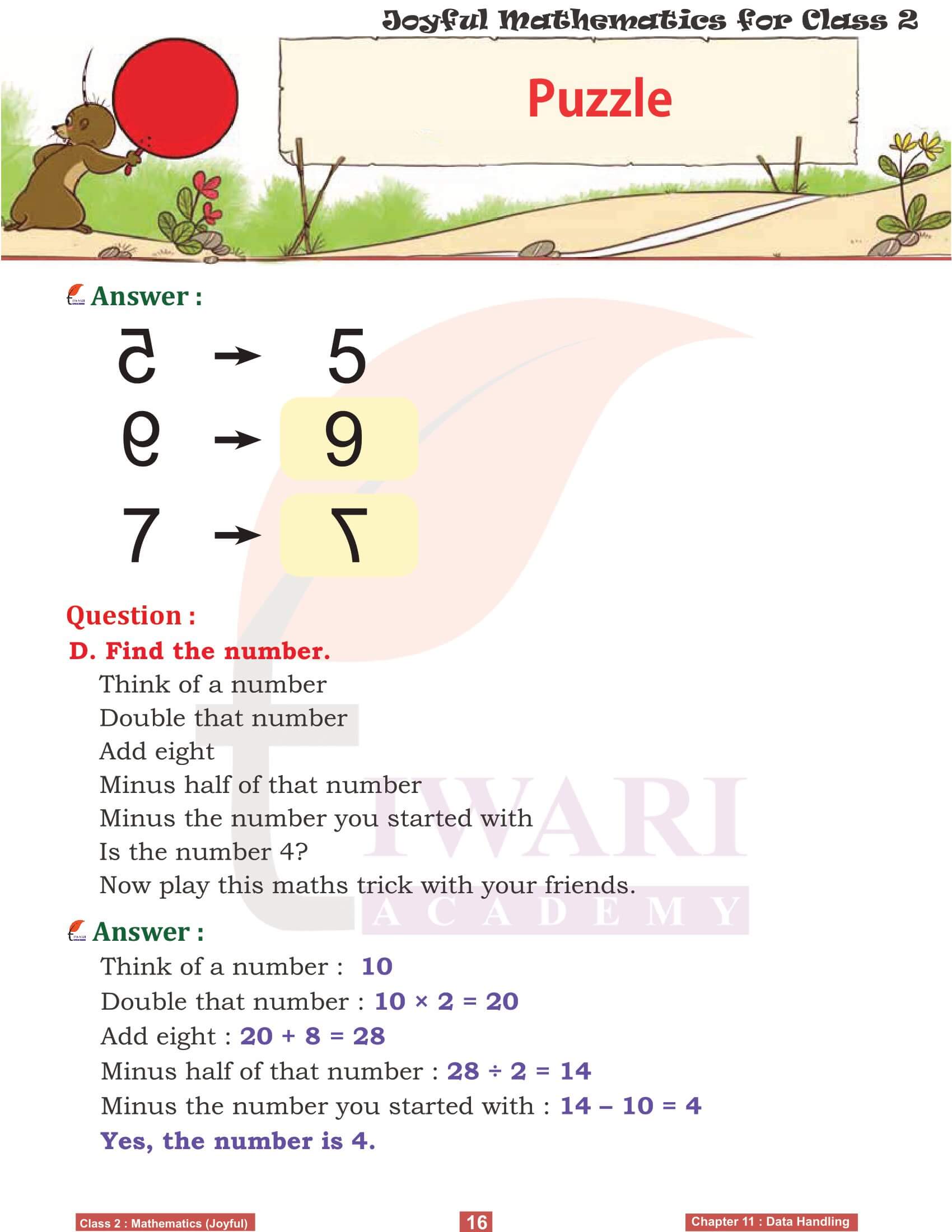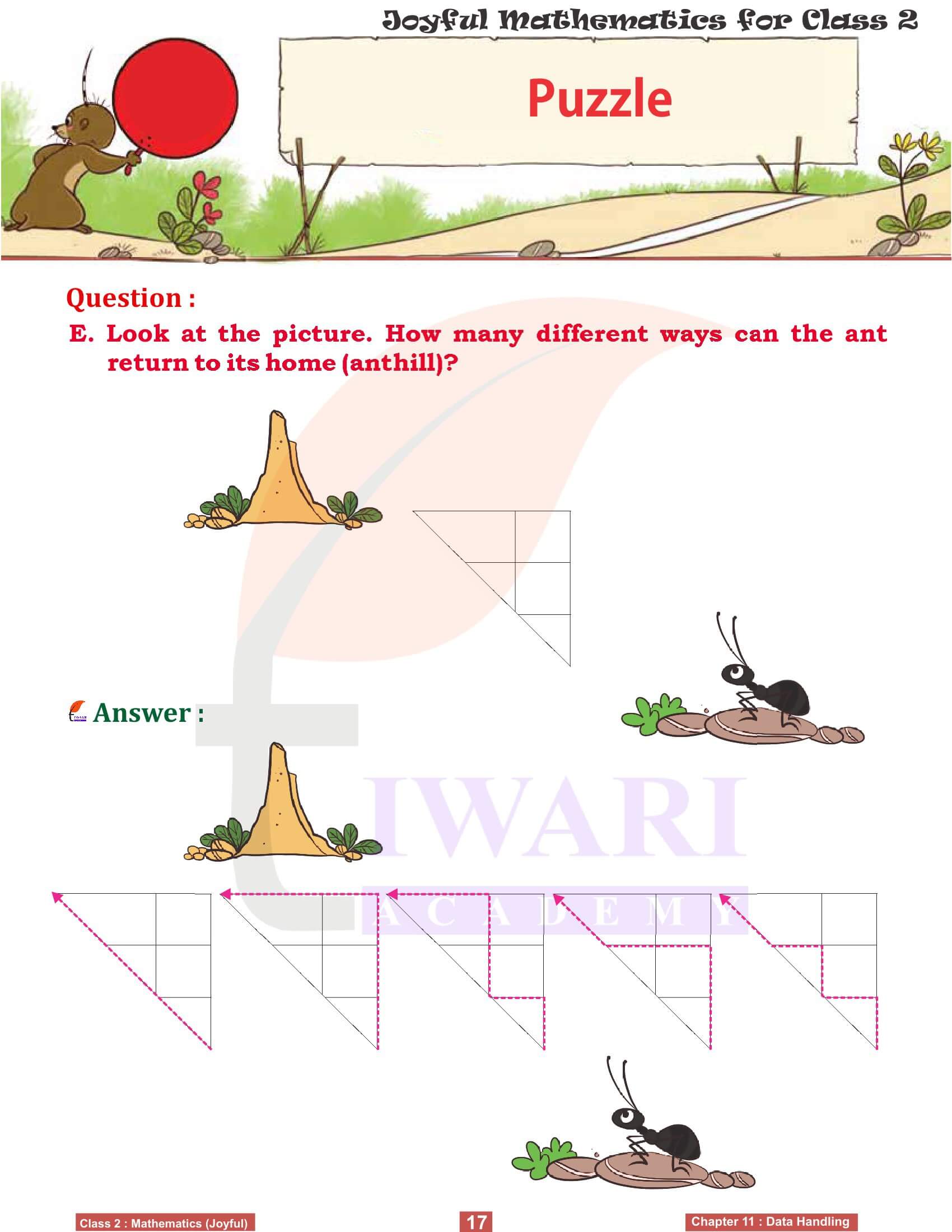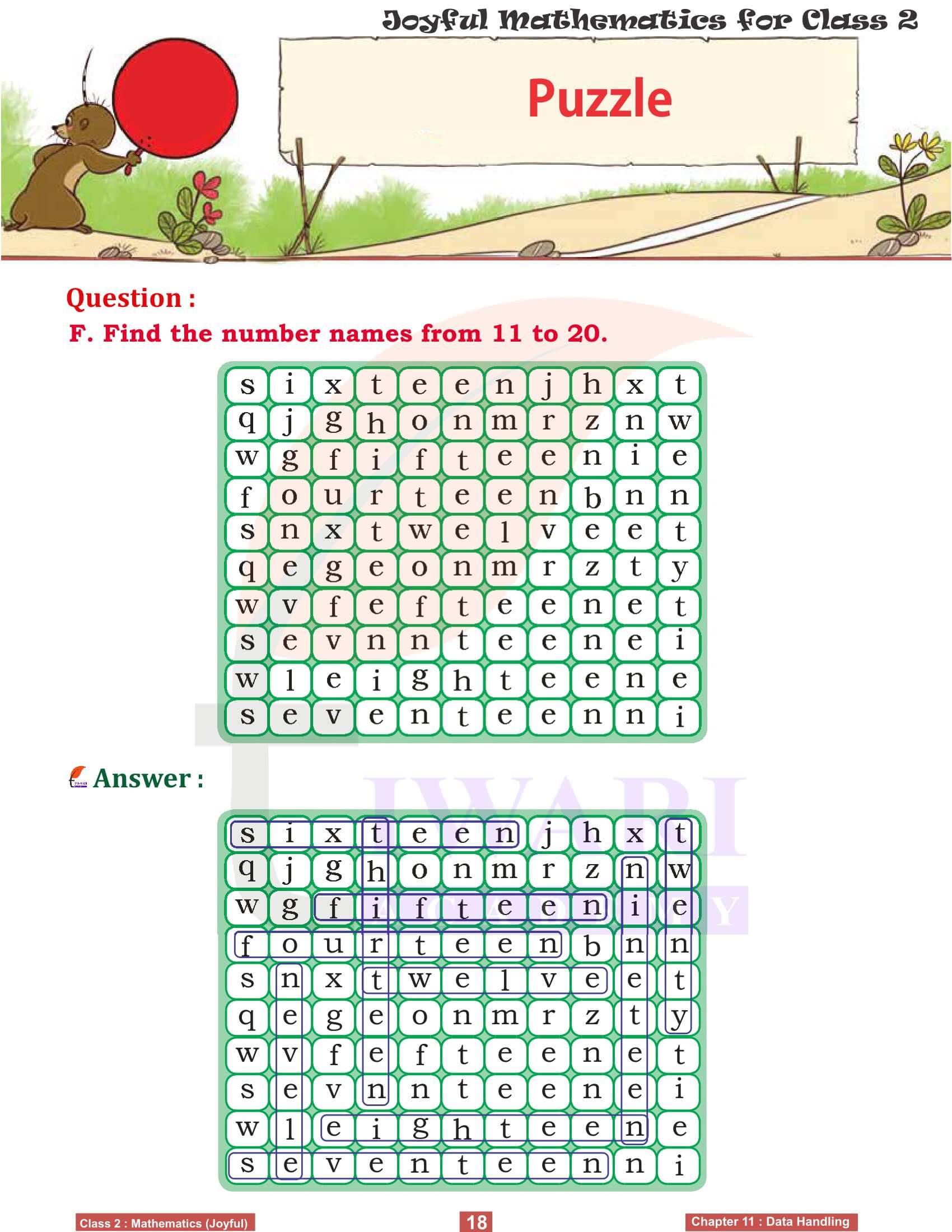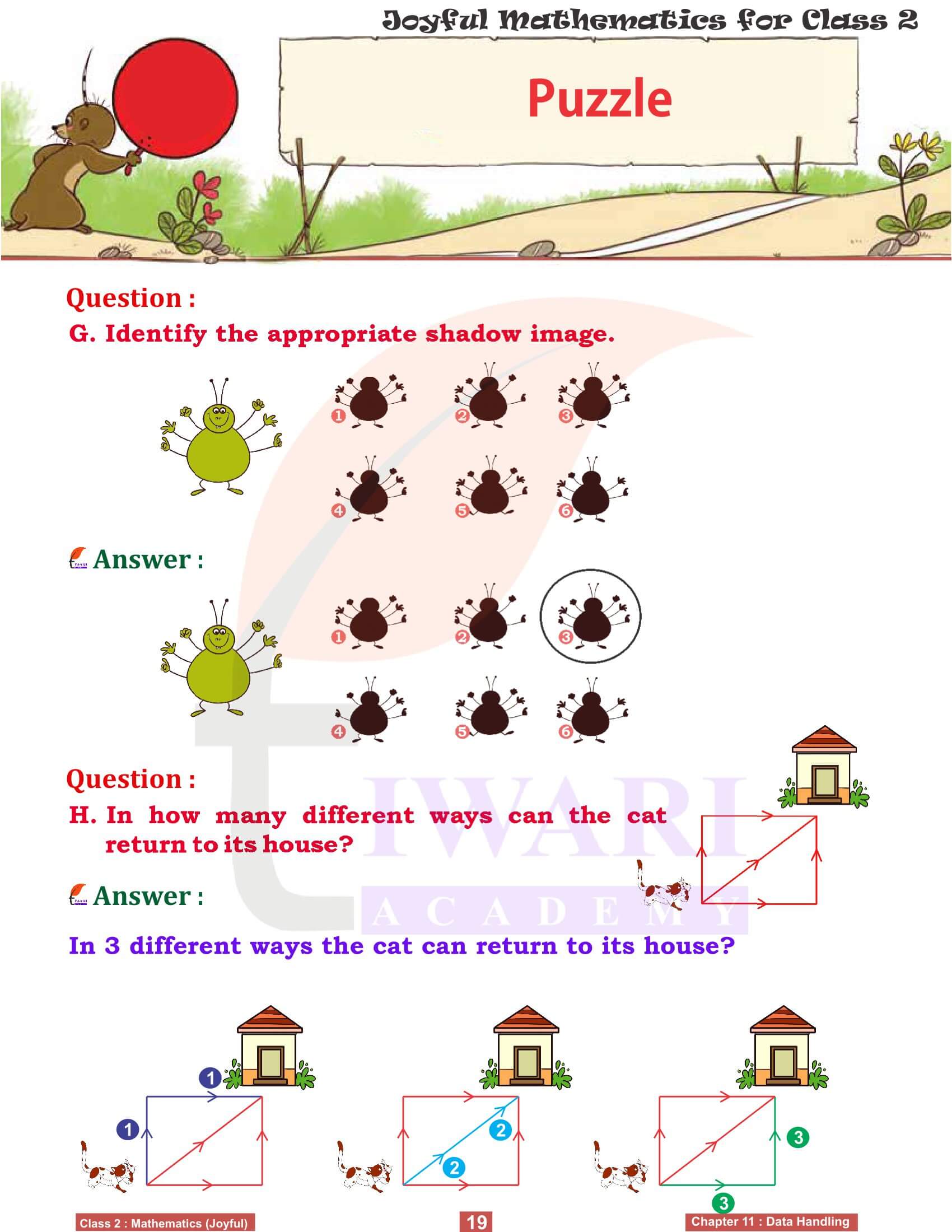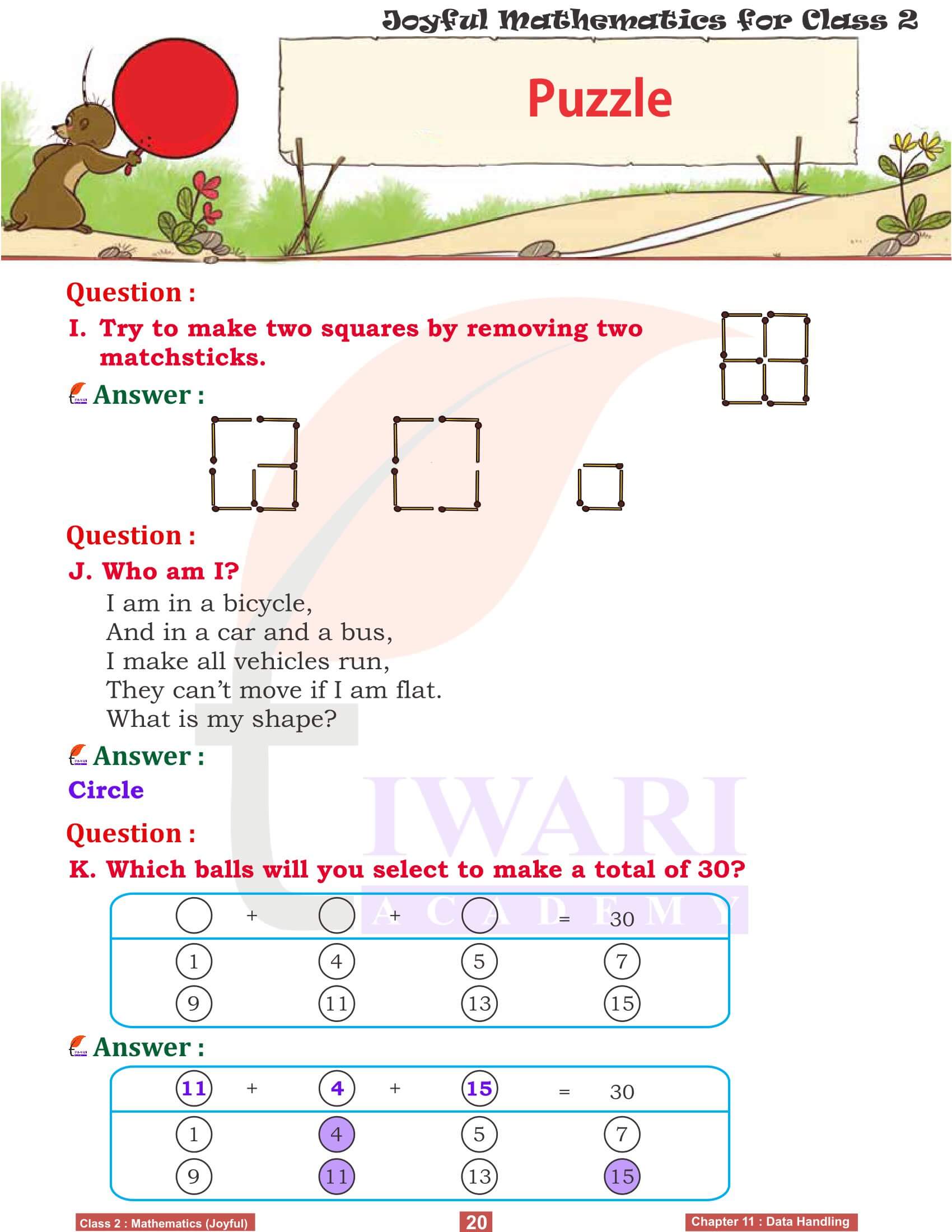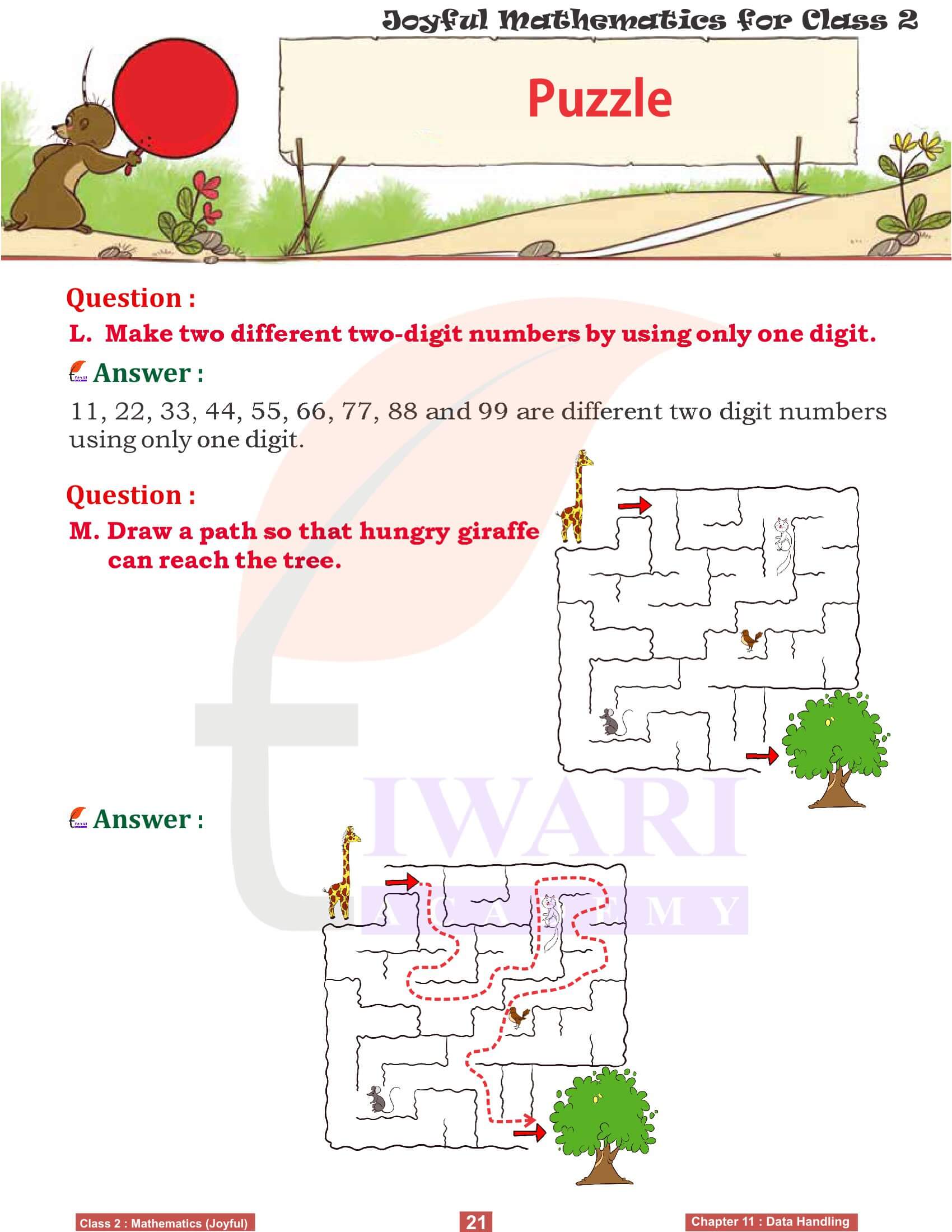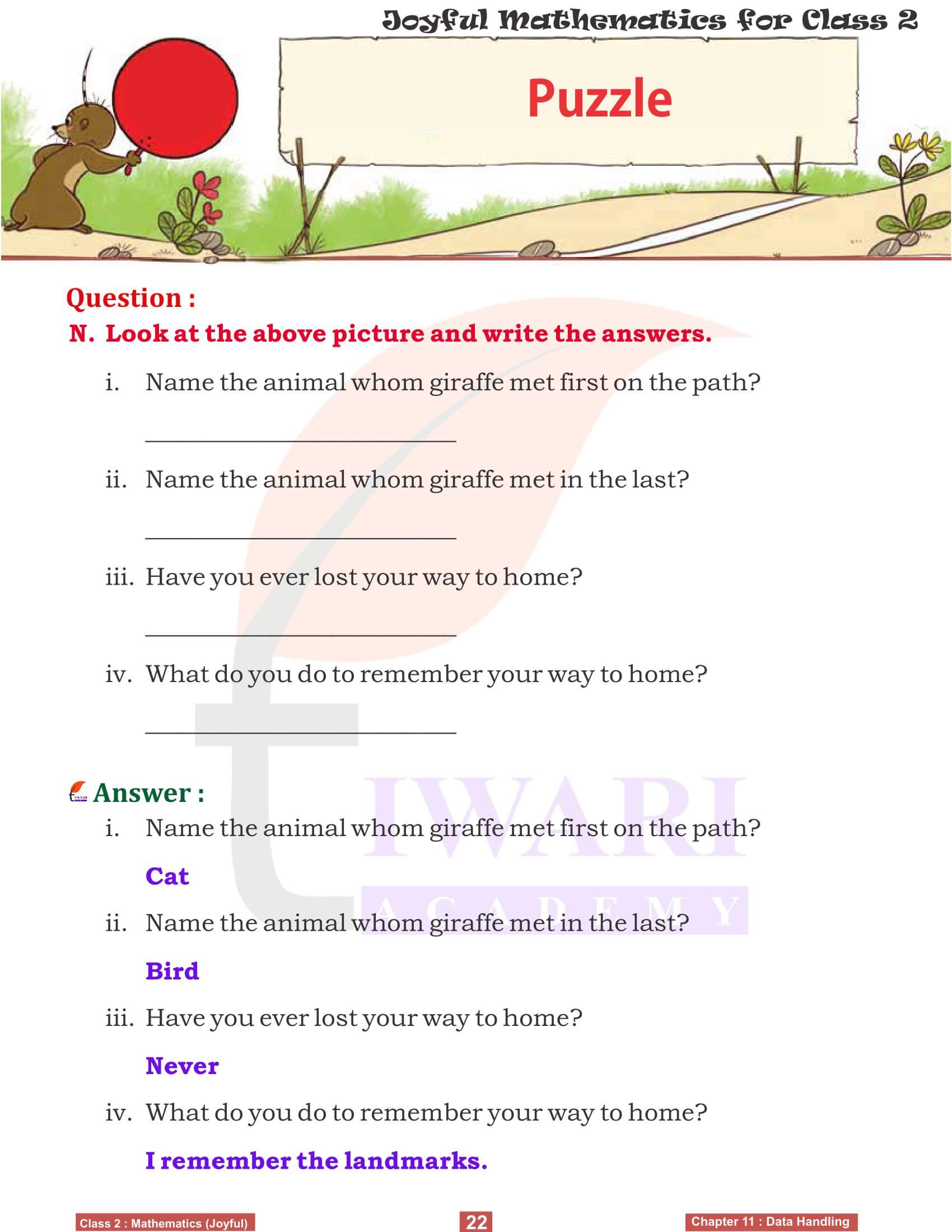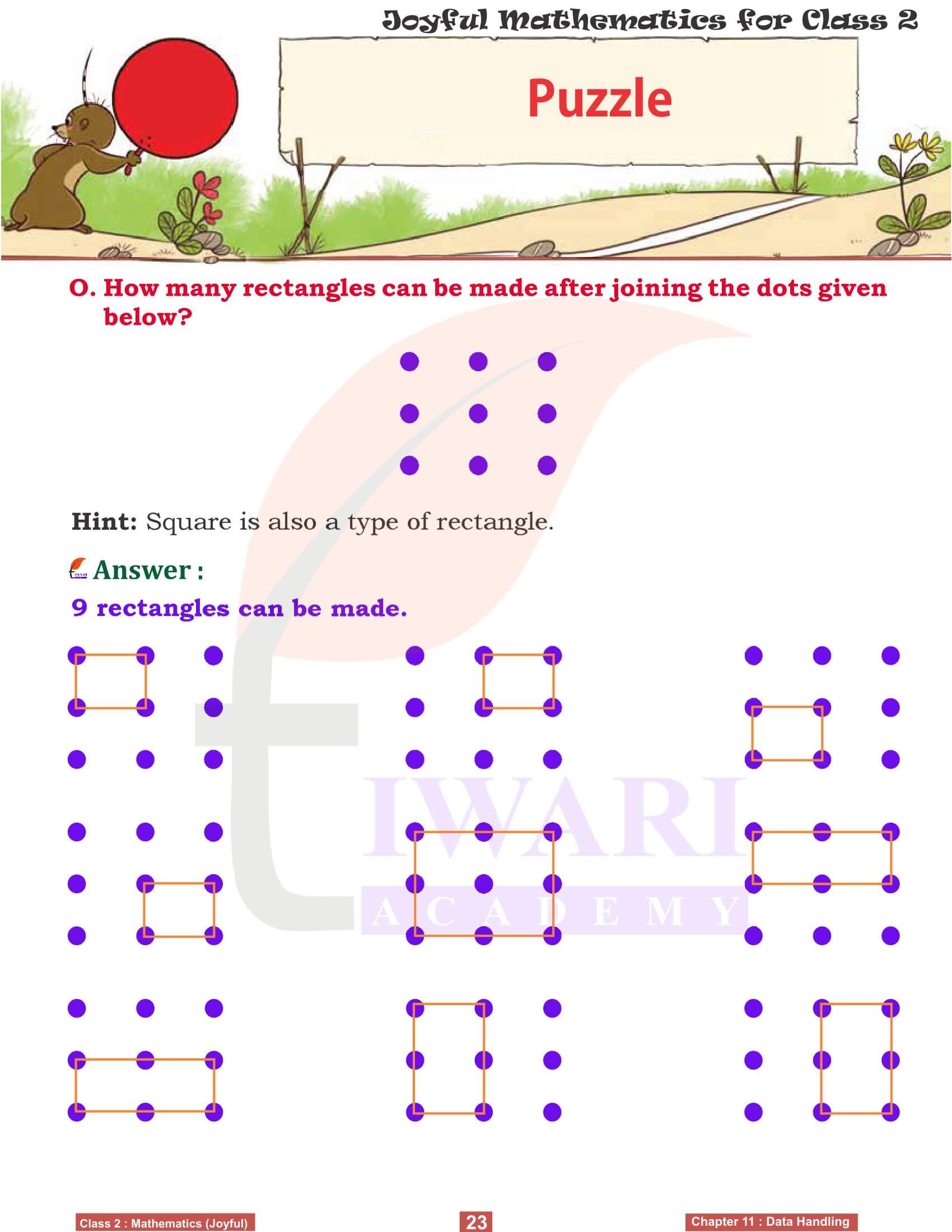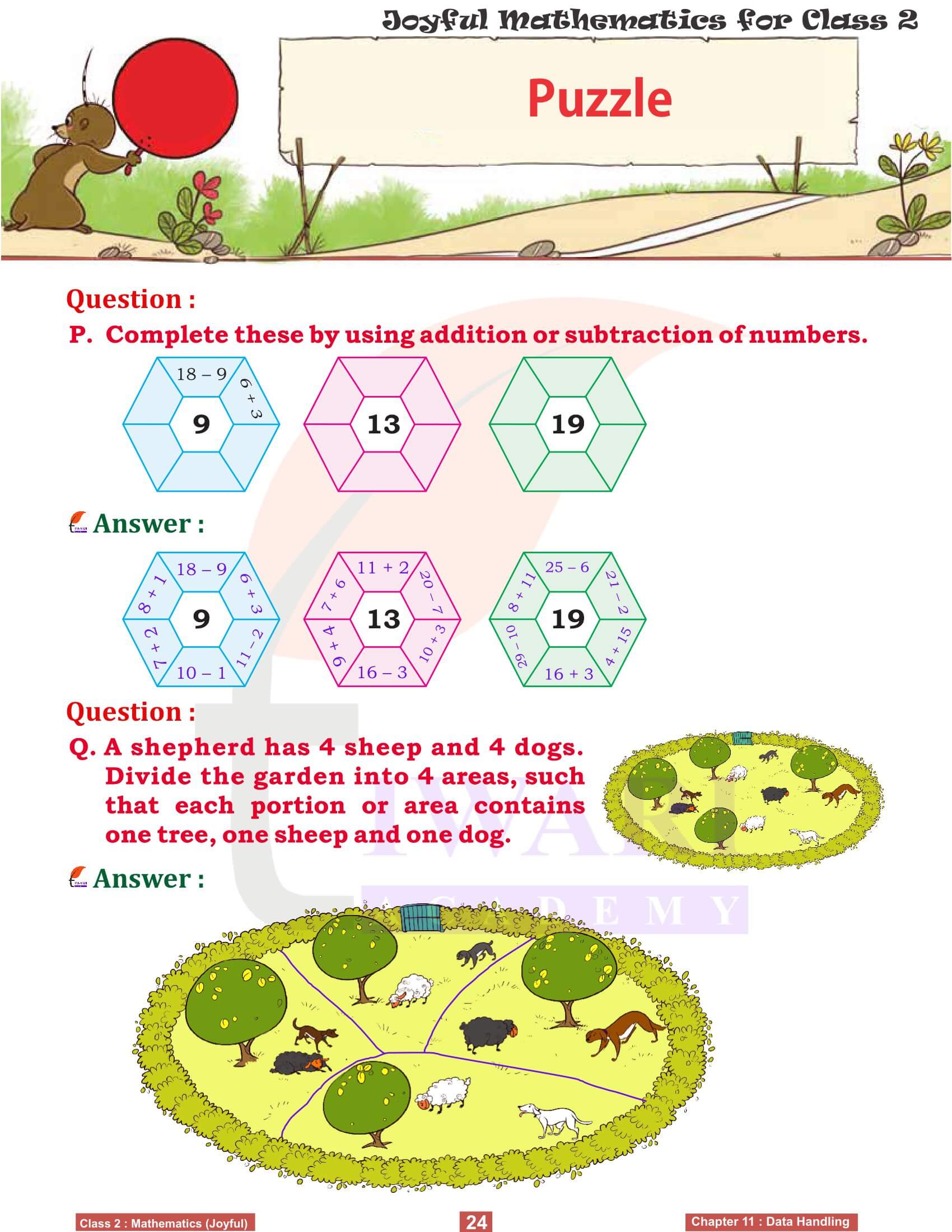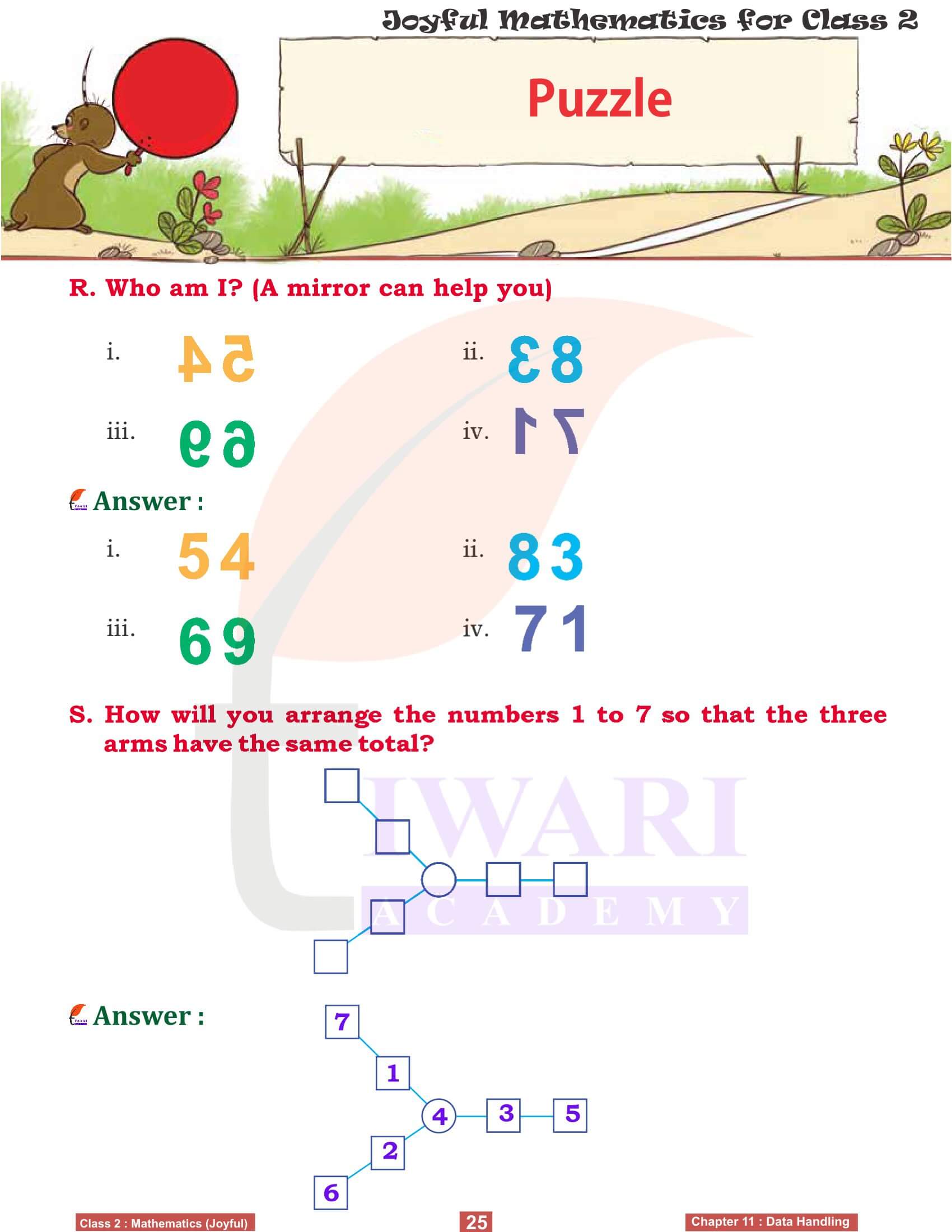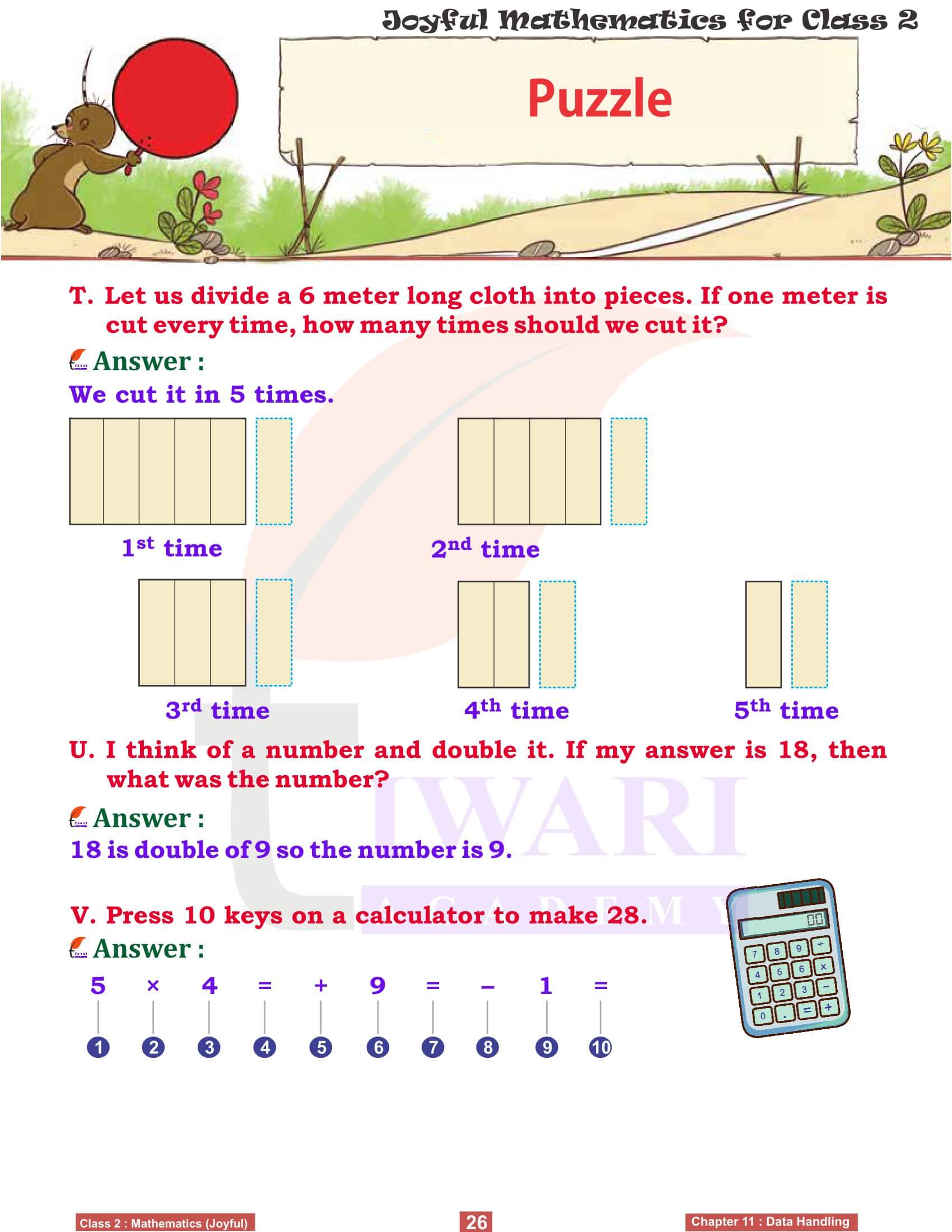NCERT Solutions for Class 2 Joyful Maths Chapter 11 Data Handling in Hindi and English Medium updated for new academic session 2025-26. Class 2 Maths Chapter 11 Data Handling, plays a significant role in building foundational concepts for young learners. Parents and teachers frequently search for NCERT Solutions for Class 2 Math Chapter 11, as they provide comprehensive explanations and step-by-step problem-solving methods. Get here class 2 Maths chapter 11 question answers and assignments according to NEP 2020.
Study Plan for Class 2 Maths
Study Plan for Class 2 all Subjects
Class 2 Joyful Maths Chapter 11 Data Handling Solutions
Many educational platforms offer Class 2 Mathematics Chapter 11 worksheets to help students practice key concepts such as identifying lines, shapes and organizing data. Interactive video lessons and online tests make learning engaging while assessing the child’s grasp of the material. These resources, combined with lesson plans and teaching resources, ensure that educators can provide a well-rounded experience to students.
Understanding Data Handling in Class 2 Maths
Data Handling in Class 2 Mathematics is an introductory concept that aims at familiarizing young learners with basic data interpretation and representation. At this level, students are introduced to the concept of data – pieces of information that can be collected, analyzed and presented in various forms. The chapter typically starts by explaining simple data gathering methods, such as counting items, and progresses towards organizing this data into categories. For instance, children might count the number of apples, oranges and bananas in a fruit basket to understand quantities. This initial step is crucial as it lays the groundwork for understanding that data can be quantified and compared, serving as a foundation for more complex mathematical and analytical skills.
To help students excel in Class 2 Maths Chapter 11, educational resources include practice questions, revision notes and study material specifically designed for this chapter. With the help of MCQs and important questions, learners can focus on key topics and prepare for exams effectively. Many schools incorporate interactive exercises and activities to make concepts like data organization and line drawing more relatable. For self-paced learning, parents often look for PDF downloads and chapter summaries to assist their children. With structured guidance and the right tools, mastering questions and answers from Chapter 11 becomes an enjoyable and achievable task.
Collecting Data
In class 2 Maths chapter 11 usually emphasizes the process of collecting data. It teaches children the importance of observation and recording, presenting scenarios where students can count and note data themselves. For instance, students may be asked to observe the weather over a week and record the number of sunny, cloudy and rainy days. Through such activities, students learn to pay attention to details and record what they observe accurately. This hands-on approach not only makes learning interactive but also helps instill the habit of organized recording, which is vital in the field of data handling.
Organizing Data
Once the data is collected, the next step is to organize it effectively. The chapter introduces students to simple categorization, where they learn to sort data into different groups or categories to simplify analysis. For example, children might categorize collected leaves by color, shape or size. Teachers might use pictorial representations or tangible items to demonstrate this concept, making it easier for students to grasp. Organizing data helps children understand patterns and relationships within the data, preparing them for more complex classification and analysis in higher grades.
Representing Data
After organizing the data, students are taught how to represent it visually. This could involve simple charts or drawings that depict the collected information clearly and attractively. For example, students might use bar charts or picture graphs to represent the number of each type of fruit in a basket. Such visual representations make abstract concepts more tangible for young learners. They also help students in interpreting data, as they can see at a glance which category is the most or least numerous. This visual aspect of data handling is crucial, as it builds a bridge between raw data and meaningful information.
Analyzing Data
The analysis section introduces students to basic interpretations of the data they have represented visually. At this stage, students are encouraged to look at their charts or graphs and draw simple conclusions. For example, they might be asked to identify which category has the most or the least numbers. This step is significant as it introduces children to the idea of inference – deriving conclusions based on the data presented. It helps students understand that data is not just numbers or categories but can tell us stories and reveal patterns.
Applying Data Handling Skills
The chapter usually aims at reinforcing the learned concepts through various fun and interactive activities or real-life applications. Students might be asked to apply their data handling skills to organize a classroom library, plan a picnic or even help in a grocery shop. Such applications make learning relevant and show students the practical value of what they are learning.
Additionally, these activities encourage teamwork, problem-solving, and critical thinking, which are essential skills in any field of study or aspect of life.
What topics are covered in Class 2 Maths Chapter 11?
Class 2 Maths Chapter 11 focuses on “Data Handling,” teaching students about identifying and drawing different types of lines, shapes and organizing simple data. The chapter builds foundational concepts in geometry and data interpretation, preparing students for advanced topics in higher grades.
Where can I find NCERT Solutions for Class 2 Maths Chapter 11?
NCERT Solutions for Class 2 Maths Chapter 11 are available on educational websites Tiwari Academy, providing step-by-step answers to all textbook exercises. These solutions help students understand concepts and improve problem-solving skills, making learning easier.
What resources can help in learning Chapter 11 effectively?
Worksheets, revision notes, lesson plans and video lessons are excellent resources for mastering Chapter 11. Interactive exercises and MCQs make learning engaging, while practice questions help reinforce concepts. Many platforms also offer downloadable PDFs for easy offline learning.
Are online tests available for Chapter 11?
Yes, many websites and apps provide online tests specifically for Chapter 11. These tests include MCQs and practice questions that assess a student’s understanding of lines, shapes and data handling, offering instant feedback to improve their performance.
How can parents assist their children in Chapter 11?
Parents can help by using practice worksheets, revision notes and study material available online. Encouraging children to engage with interactive activities, such as drawing lines and organizing data, makes the learning process fun. Watching video lessons together can also clarify complex concepts.
